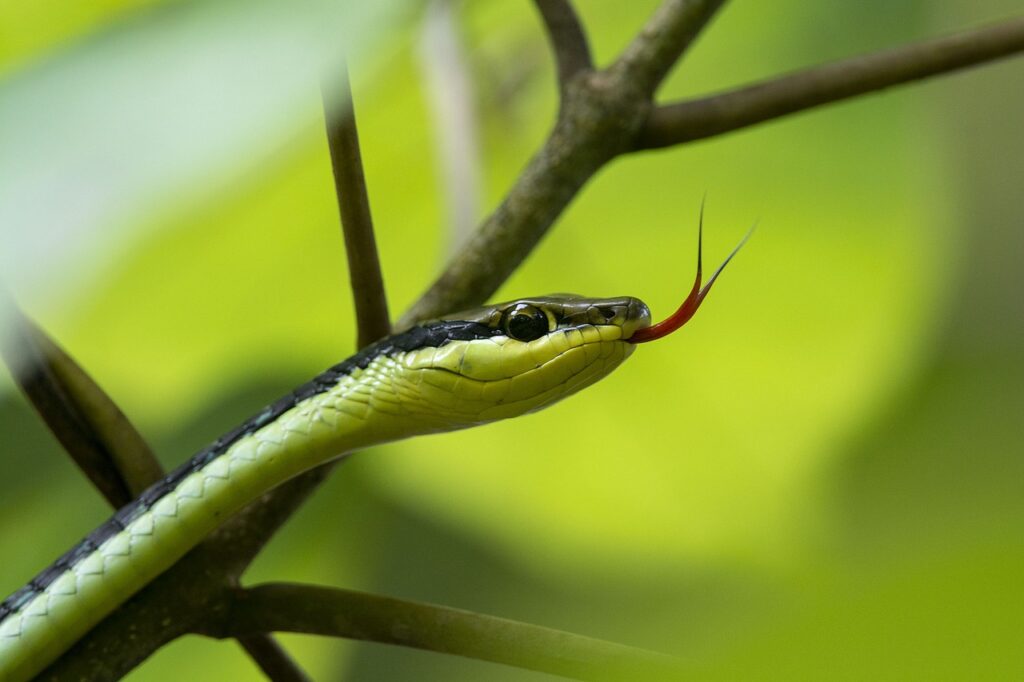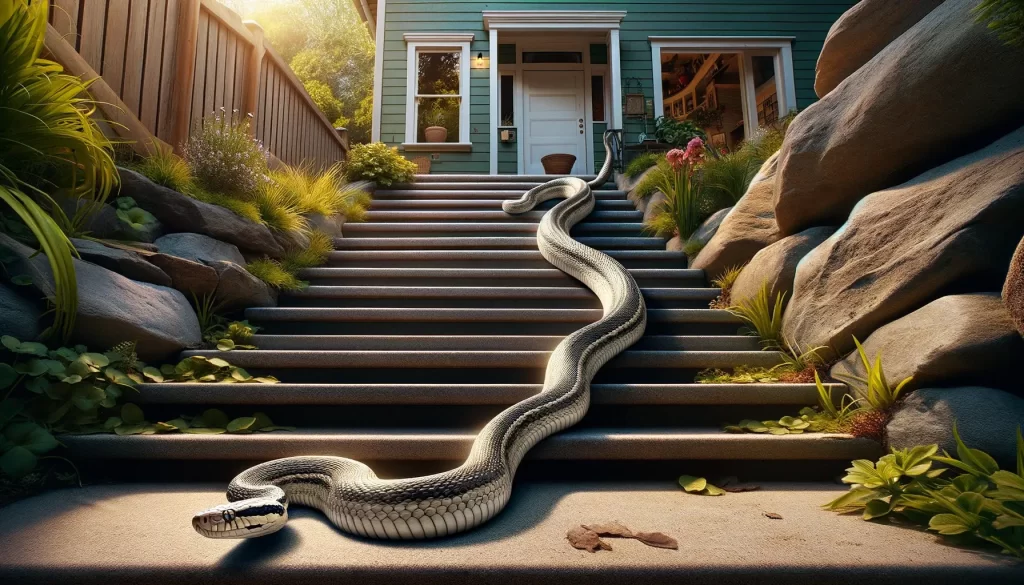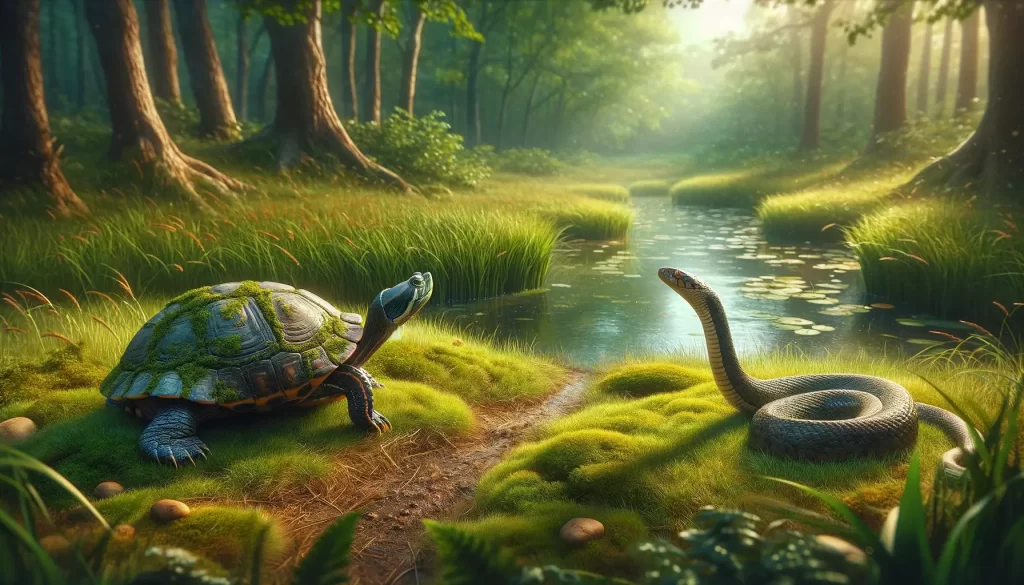So, you’re wondering if Montana has snakes, huh? Well, you might be surprised to learn that this seemingly serene state is not exempt from the slithering creatures.
While Montana is not exactly known for its abundance of snakes, it’s home to a few species that have managed to make their presence known.
From the venomous rattlesnakes to harmless garter snakes, this article will give you the lowdown on whether you’ll need to watch your step on your next hiking adventure in the Big Sky Country.

Types of Snakes Found in Montana
Montana may not be the first place that comes to mind when you think of snakes, but believe it or not, there are several species of snakes that call this beautiful state home.
These snakes vary in size, color, and behavior, making Montana an interesting place for snake enthusiasts and nature lovers alike.
In this article, we will explore the different types of snakes native to Montana, as well as provide some tips on how to safely coexist with these fascinating creatures.
Snakes Native to Montana
Bullsnake
The Bullsnake, also known as the Pituophis catenifer sayi, is one of the largest snakes found in Montana.
This impressive reptile can reach lengths of up to 7 feet, and its yellowish-brown body with dark blotches makes it easy to identify.
Bullsnakes are non-venomous and play an essential role in controlling rodent populations, making them valuable assets to the ecosystem.
Gophersnake
Similar in appearance to the Bullsnake, the Gophersnake (Pituophis catenifer) is another non-venomous snake native to Montana.
These snakes are often mistaken for Rattlesnakes due to their similar coloration and ability to mimic their behavior by vibrating their tails.
However, it’s important to remember that Gophersnakes are harmless and beneficial to the environment.
Garter Snake
Garter snakes are a common sight in many parts of North America, including Montana.
These slender snakes are known for their striking color patterns, which usually consist of green, brown, or black stripes running along their bodies.
Their small size and non-aggressive nature make them harmless and even beneficial, as they feed on various pests such as slugs and insects.
Racer
The Racer, or Coluber constrictor, is a fast-moving snake species that can be found in Montana.
These snakes are known for their ability to reach impressive speeds when threatened, making them difficult to catch.
Racers are non-venomous and typically have slender bodies with a solid color, ranging from green to brown. They are primarily active during the daytime and are diurnal hunters.
Northwestern Garter Snake
The Northwestern Garter Snake (Thamnophis ordinoides) is a subspecies of the common Garter snake and is found in the northwestern region of Montana.
Like other Garter snakes, they have distinctive stripes running along their bodies, often in vibrant colors such as orange or yellow.
These snakes are beneficial to the environment, as they feed on small mammals, amphibians, and insects.
Rubber Boa
The Rubber Boa (Charina bottae) is a unique snake species that can be found in Montana. Known for their rubbery skin and blunt tail, these snakes have a distinct appearance that sets them apart from other species.
Rubber Boas are non-venomous and are known to be docile, making them great for snake enthusiasts who prefer a calmer reptile.
They are primarily nocturnal, spending their days under rocks or in burrows.
Plains Garter Snake
The Plains Garter Snake (Thamnophis radix) is a species of Garter snake that is found throughout various regions of Montana.
These snakes are known for their adaptability and can be found in a wide range of habitats, including grasslands, meadows, wetlands, and even urban areas.
Like other Garter snakes, they play a vital role in controlling pest populations and are harmless to humans.

Snakes Commonly Encountered in Montana
While Montana is home to several snake species, there are certain snakes that are more commonly encountered by residents and visitors alike.
These snakes are usually harmless and play an essential role in maintaining the ecological balance of their respective habitats.
Harmless Snakes in Montana
Gopher Snake
The Gopher Snake, often mistaken for a Rattlesnake, is one of the most commonly encountered snakes in Montana.
These snakes can reach lengths of up to 6 feet and have a wide range of color variations, including red, yellow, or brown.
Gopher snakes are non-venomous and are known for their ability to mimic the behavior of Rattlesnakes by hissing and vibrating their tails when threatened.
Garter Snake
Garter snakes, as mentioned earlier, are another species commonly encountered in Montana.
Their small size, colorful patterns, and non-aggressive nature make them easily distinguishable from their venomous counterparts.
Garter snakes are often found near bodies of water, as they are excellent swimmers and feed on aquatic organisms.
Bullsnake
Like the Gopher Snake, Bullsnakes are often mistaken for Rattlesnakes due to their similar appearance and ability to mimic rattling sounds.
However, Bullsnakes are non-venomous and are actually quite beneficial to have around.
These snakes feed on rodents and help control their population, making them valuable assets to both rural and urban areas.
Northwestern Garter Snake
The Northwestern Garter Snake, a subspecies of the common Garter snake, is also commonly encountered in Montana.
Their vibrant colors and non-aggressive nature make them fascinating to observe. Northwestern Garter snakes are typically found near water sources, such as ponds, streams, or marshes, where they hunt for their preferred prey, including small fish and amphibians.
Rubber Boa
Rubber Boas, with their unique appearance and docile nature, are another species that is commonly encountered in Montana.
These snakes are known for their ability to curl up into a ball and hide their heads, making them less threatening to humans.
Rubber Boas are primarily nocturnal and can be found in rocky areas or underground burrows.
Plains Garter Snake
The Plains Garter Snake, a widespread species in Montana, is commonly seen in grasslands, meadows, or even urban areas.
These snakes are highly adaptable and can feed on a variety of prey, including small mammals, birds, and amphibians.
Plains Garter Snakes are harmless to humans and are known for their rapid movements when disturbed.

Venomous Snakes in Montana
While the majority of snake species in Montana are harmless to humans, there is one venomous snake that residents and visitors should be aware of – the Prairie Rattlesnake (Crotalus viridis).
This rattlesnake species is found in the eastern and southeastern regions of the state, where dry grasslands and sagebrush dominate the landscape.
It is essential to know how to identify and avoid encounters with these venomous snakes to ensure one’s safety.
Identification of Venomous Snakes
Rattlesnake Characteristics
Prairie Rattlesnakes, like other rattlesnake species, have distinct characteristics that can help identify them and distinguish them from harmless snake species.
One of the most prominent features of rattlesnakes is their rattle, located at the end of their tail.
This rattle makes a buzzing sound when the snake feels threatened, serving as a warning to potential predators or humans.
Additionally, rattlesnakes have triangular-shaped heads, vertical pupils, and a series of dark spots or bands running along their bodies.
Conservation of Snakes in Montana
Snakes, regardless of their venomous or harmless nature, play crucial roles in the ecosystem and should be respected and protected. Unfortunately, snakes face numerous threats, including habitat loss, road mortality, and persecution due to human fears and misconceptions. Conservation efforts are essential in ensuring the survival of these remarkable creatures for future generations.
Protecting Snakes in Montana
Respecting Snake Habitats
One of the most effective ways to protect snakes in Montana is by respecting their habitats.
Snakes, like all wildlife, require suitable habitats to survive, reproduce, and thrive. Avoid disturbing or destroying their natural habitats, such as forests, grasslands, wetlands, or rocky areas, as doing so can disrupt their natural behaviors and survival.
Avoiding Unnecessary Conflict
Snake encounters are not uncommon in Montana, especially in outdoor recreational areas. When coming across a snake, it’s crucial to avoid unnecessary conflict.
Stay calm, keep a safe distance, and do not attempt to handle or disturb the snake. Remember, most snakes will retreat when given the opportunity, and their primary goal is to avoid human contact.
Educating Others
Snake education plays a vital role in dispelling myths and fears surrounding these fascinating creatures.
By educating others about the importance of snakes in the ecosystem, their behaviors, and how to safely coexist with them, we can help foster a greater appreciation and understanding of these often-misunderstood animals.
This knowledge can contribute to enhanced conservation efforts and improved attitudes towards snakes.
Snake Safety Tips
While most snakes in Montana are harmless, it’s essential to exercise caution and follow these snake safety tips when exploring snake habitats or encountering snakes in the wild.
Recognizing Snake Warning Signs
Understanding snake warning signs can help minimize the chances of a snake encounter.
Keep an eye out for rustling noises in dry leaves, a sudden freezing motion, or a raised head in nearby grass. These signs may indicate the presence of a snake, allowing you to proceed with caution.
Keep a Safe Distance
Maintaining a safe distance from snakes is crucial. Remember that most snake bites occur when people attempt to handle or interact with the snake.
It’s best to observe snakes from a distance using binoculars or a camera lens, appreciating their beauty without unnecessarily putting yourself at risk.
Avoid Disturbing or Handling Snakes
Snakes should never be disturbed or handled, especially if you lack the necessary knowledge and experience.
Even non-venomous snakes can bite if they feel threatened or cornered. If you come across a snake, give it space and allow it to move away on its own.
Snakes play vital roles in the ecosystem, and it’s best to let them go about their business undisturbed.
Know What to Do If Bitten
In the unlikely event of a snake bite, knowing what to do can make a significant difference in the outcome.
Seek medical attention immediately and try to remember the snake’s appearance for identification purposes.
Stay calm and keep the affected area immobilized while waiting for medical professionals to provide appropriate treatment.
Finding Snakes in Montana
If you’re interested in observing snakes in their natural habitats, Montana offers various opportunities.
Understanding their preferred environments and seasonal activities can increase your chances of encountering these fascinating reptiles.
Habitats and Preferred Environments
Snakes in Montana are found in a variety of habitats, including grasslands, forests, wetlands, and rocky areas.
Garter snakes, for example, are often seen near water sources, while Bullsnakes and Gophersnakes can be found in open grasslands and agricultural areas.
Conducting research or seeking guidance from local conservation organizations can provide valuable insights into specific snake habitats.
Seasonal Activity and Hibernation
Snake activity in Montana varies depending on the season. During the warmer months, snakes are more active and can be seen basking in the sun or hunting for prey.
However, during colder periods, snakes enter a state of hibernation, seeking refuge in underground burrows or other sheltered areas.
Spring and fall are ideal times to see snakes, as they are emerging from or preparing for hibernation.
Snake-Watching Locations in Montana
Montana’s diverse landscapes offer opportunities to observe snakes in their natural habitats.
National parks, such as Glacier National Park and Yellowstone National Park, provide ample opportunities for wildlife sightings, including snakes.
Local nature reserves, hiking trails, and wildlife management areas are also worth exploring. However, always remember to respect these areas, follow park guidelines, and leave no trace.
Final Thoughts
In conclusion, Montana may not be known as a snake haven, but it is indeed home to a variety of snake species.
From the harmless Bullsnakes and Garter snakes to the venomous Prairie Rattlesnake, these reptiles play important roles in maintaining the delicate balance of the ecosystem.
By respecting snake habitats, avoiding unnecessary conflict, and educating others, we can foster a better understanding and appreciation for these fascinating creatures, ultimately contributing to their conservation and protection in Montana and beyond.
So, the next time you find yourself in this picturesque state, remember to keep an eye out for these slithering wonders and enjoy the marvels of nature they represent.




